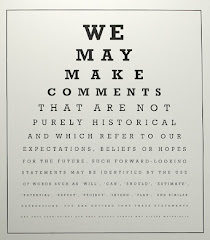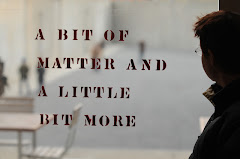We the Priesthood?
What purpose does art writing serve?—a self-reflexive question for this forum to be sure; yet we can’t fail to notice that it is one begged again and again by cultural critics who every once in a while decide to turn their attentions to our modest yet flashy corner of the industry. But what to do when the swipes come from within our ranks? During an otherwise favorable review of Arthur Danto’s Unnatural Wonders from a few weeks ago, Jackie Wullschlager, chief art critic for the Financial Times, had this to say:
A system so needful of interpreters surely lays contemporary art, its makers and consumers open to the same abuse as medieval Catholicism, when an ignorant congregation depended on a substantial class of (mostly self-serving) priests and pardoners as intermediaries to the confusing, elusive concept of God…[Commentaries on art] are written by today’s priests and pardoners, each carrying a mix of truth-seeking, vanity, ambition and the conviction that their own big idea is the route to aesthetic understanding.
What are we to make of this? To my own ear, this dismissal echoes the sentiments of the “anti-theory” crowd which grew very vocal in the 1990s. But is it more than this? Why, for example, does it always seem to be writing about art, and contemporary art in particular, that is singled out? Why must art be more popular or, to push the point, more “lay” than either science or philosophy, the two disciplines with which it undoubtedly shares a genuine creative impulse? Or to push it even further: Is this a call for evangelical aestheticism?–i.e. the only way to true “aesthetic understanding” is through one’s own personal relationship with art?
More.
When you are dealing with language, there is no edge that the picture drops over or drops off. You are dealing with something completely infinite. Language, because it is the most non-objective thing we have ever developed in this world, never stops. Lawrence Weiner
language + the materials referred to
Lawrence Weiner designates “language + the materials referred to” as the medium for his work, allowing him to situate his sculptural practice in a wide range of geographical locations and cultural systems (or “points of reception”, in Weiner’s words). This course explores writing as a creative and critical strategy through themes such as art writing; materiality and genre; the aesthetics of the dematerialized artifact; language as sculpture, sound art, and the role of language in conceptual art.
Carey Young

Cautionary Statement (2007)
COURSE TEXTS
- Birgit Pelzer & John Goodman (1999), Dissociated Objects: The Statements/Sculptures of Lawrence Weiner (October, Vol. 90, pp. 76-108. Available via JSTOR)
- Course blog
- Donald Judd (1965) Specific Objects (in Thomas Kellein, Donald Judd: Early Work, 1955-1968, New York: D.A.P., 2002. Originally published in Arts Yearbook 8, 1965. Available via course blog).
- Jack Burnham (1968), ”System Esthetics” in Artforum
- Silvia Kolbowski (2000) An Inadequate History of Conceptual Art (October, Vol. 92, pp. 52-70. Available via JSTOR)
- Simon Morley: Writing on the Wall: Word and Image in Modern Art (Berkeley and Los Angeles: University of California Press, 2003)
- The Prose Poem: An International Journal
- Ubuweb
- W.J.T. Mitchell (1994), “Ekphrasis and the Other” in Picture Theory
A bit of matter and a little bit more

Lawrence Weiner (1976)
In the buginning is the woid, in the muddle is the sounddance.
James Joyce
James Joyce
Marcel Broodthaers holding Sadoul's L'Invention du Cinéma

Photo: Joaquin Romero Frias
"Let's waltz the rumba."
Fats Waller
This is...
7. This is not philosophy, it’s poetry. And if I say so, then it becomes painting, music or sculpture, judged as such. If there are variables to consider, they are at least partly economic—the question of distribution, etc. Also differing critical traditions. Could this be good Poetry, yet bad music? But yet I do not believe I would, except in jest, posit this as dance or urban planning.
from The Chinese Notebook
by Ron Silliman
from The Chinese Notebook
by Ron Silliman
Alice's Adventures in Wonderland
ALICE was beginning to get very tired of sitting by her sister on the bank and of having nothing to do: once or twice she had peeped into the book her sister was reading, but it had no pictures or conversations in it, "and what is the use of a book," thought Alice, "without pictures or conversations?'
Lewis Carroll
Lewis Carroll

from Philosophical Investigations
Our language can be seen as an ancient city: a maze of little streets and squares, of old and new houses, and of houses with additions from various periods; and this surrounded by a multitude of new boroughs with straight regular streets and uniform houses.
Ludwig Wittgenstein
Ludwig Wittgenstein
Word and Image Masters Course
Class of 2008 course blog
Rui Tenreiro
Roberta Burchardt (PDF available on request)
Merve Ertufan
Class of 2009:
Rui Tenreiro
Roberta Burchardt (PDF available on request)
Merve Ertufan
Induction valve (Soupape d'admission) by Francis PICABIA

50x33 cm. Gouache over an engineering blueprint. Private collection.
ART & CONCEPTUAL WRITING
Dada stirs up everything (Dada soulève tout)

15 January, 1921
PERFORMANCE WRITING & SOUND POETRY
The Bearded heart (Le Coeur à barbe)

Sole issue of a "transparent newspaper" published by Tristan Tzara in April 1922. 2x14 cm., 8 p. Black printing on pink paper.
RHETORIC & EKPHRASIS
SPIRIT VESSEL by Katherine Ng

WORKING NOTE: SPIRIT VESSEL is letterpress printed artist book produced through a Brody Arts Fund Grant. The hand set type was printed on two sides of the paper, then cut into strips (pages) and woven into the shape of a gourd. The text lists the uses of gourds from different cultures and so does the title of this piece. In the Chinese culture, the gourd is used as a container to capture evil spirits, whereas in the Japanese culture, the gourd is used as a vessel for intoxicating spirits.
About Me
- Rolf Hughes
- Writer & critic; Guest Professor in Theory and Practice-Based Research at the Department of Interdisciplinary Studies at Konstfack University College of Arts, Crafts and Design, Stockholm; Senior Professor in Research Design at the Sint-Lucas School of Architecture, Brussels & Ghent; Senior Researcher at the Royal Institute of Technology, School of Architecture, Stockholm.